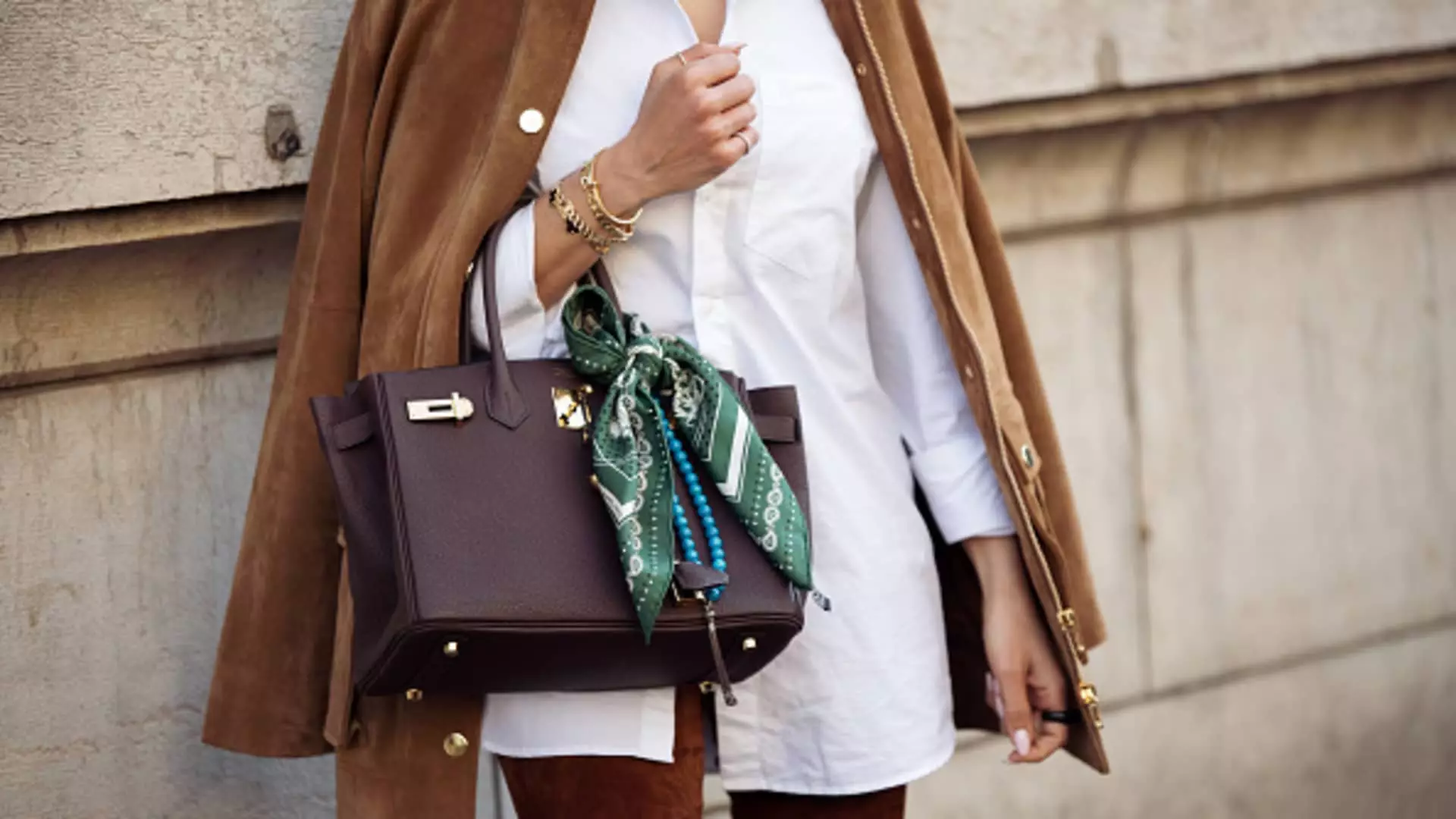In a recent announcement that has stirred mixed emotions within the luxury fashion industry, French luxury powerhouse Hermès is set to increase its U.S. prices starting May. The aim? To combat the financial implications tied to President Donald Trump’s tariffs. This move isn’t merely a reaction; it implicates broader economic realities, consumer habits, and the ever-evolving landscape of luxury commerce.
Luxury Prices: A Tactical Response to Tariffs
Executive Vice President Eric du Halgouët’s statement about price adjustments specifically for the U.S. market highlights a critical point: Hermès seeks to “fully offset” a universal 10% tariff imposed in early April. Although Hermès remains a symbol of opulence with iconic items like the Birkin and Kelly handbags, this price increase is a pivotal decision rooted in an unfortunate political environment. While the ramifications of tariffs may not touch the average consumer directly, for luxury brands reliant on exclusivity and customer loyalty, such adjustments can reshape the perception of value—a precious commodity in itself.
Consumers accustomed to splurging on high-ticket items may surprising adjust without flinching. But one wonders, at what point does the allure of luxury goods yield to economic realities? It’s a dangerous dance between maintaining brand prestige and ensuring profitability in an increasingly competitive and, dare I say, volatile market.
Hitting an Economic Ceiling: The Broader Implications
The ripple effects of this price increase go beyond just Hermès. As U.S. consumers brace themselves for escalating prices across various sectors—including electronics, clothing, and housing—there’s a growing concern that purchasing power will decline. Rising costs could contribute to an unsettling trend: a marked reduction in discretionary spending as economic uncertainty looms.
Recent data reflected a slowdown for Hermès compared to previous quarters, with the luxury brand experiencing 11% sales growth in the Americas—a notable dip from the staggering 17.6% in prior quarters. Although robust, the analysts’ reports suggest a cracking facade. With revenue growth expectations falling short, is there a looming shadow over the industry? Analysts may argue that luxury brands can better weather the storm, thanks to their clientele’s financial resilience. Yet, history shows us that even the most prestigious brands can falter under adverse economic conditions and shaky consumer confidence.
Hermès versus LVMH: The Battle of Market Capitalization
The rivalry between Hermès and LVMH is emblematic of a much larger narrative within the luxury sector. Hermès recently overtook LVMH in market capitalization, albeit briefly. While they stand toe-to-toe in financial support, Hermès’ annual revenue pales in comparison to LVMH’s sprawling portfolio. This discrepancy reveals an inherent challenge: Hermès is positioning itself as a luxury purveyor without drifting into mainstream territories, while LVMH operates a vast empire that requires agility across diverse markets.
The fall of LVMH’s first-quarter sales raised eyebrows, particularly given its reliance on fashion and leather goods. This prompts contemplation: Is it sustainable for luxury players to pass tariff-related costs on to wealthy consumers indefinitely? Can consumer habits withstand an increased financial strain, especially if the broader economy stumbles? The luxury market’s resilience will be tested in the face of evolving consumer priorities and a potential for recessionary anxiety.
The Future of Luxury: Consumer Dynamics in Play
The ever-changing political climate, with its implications on tariffs and trade, highlights a critical dilemma for luxury brands, including Hermès. Will consumers continue to view high-priced luxury items as essential status symbols amid rising costs? As price increases make their inevitable mark, there lies a psychological tipping point; one where buyers might reevaluate their relationship with luxury—questioning scarcity against costs.
Additionally, as luxury brands like Hermès make such strategic decisions, it raises broader ethical debates about corporate responsibility versus shareholder expectations. Should companies compromise on price integrity to appease short-term economic factors? The responses to these questions will shape the future of luxury commerce, intertwining economics with evolving consumer perceptions.
Hermès’ decision to raise prices is part of a much larger narrative—a reflection of the intersection of politics, consumer behavior, and the nature of luxury itself. The implications are vast, and as the economy wavers, so too will the perceptions held by consumers eagerly seeking to uphold their elite status.

